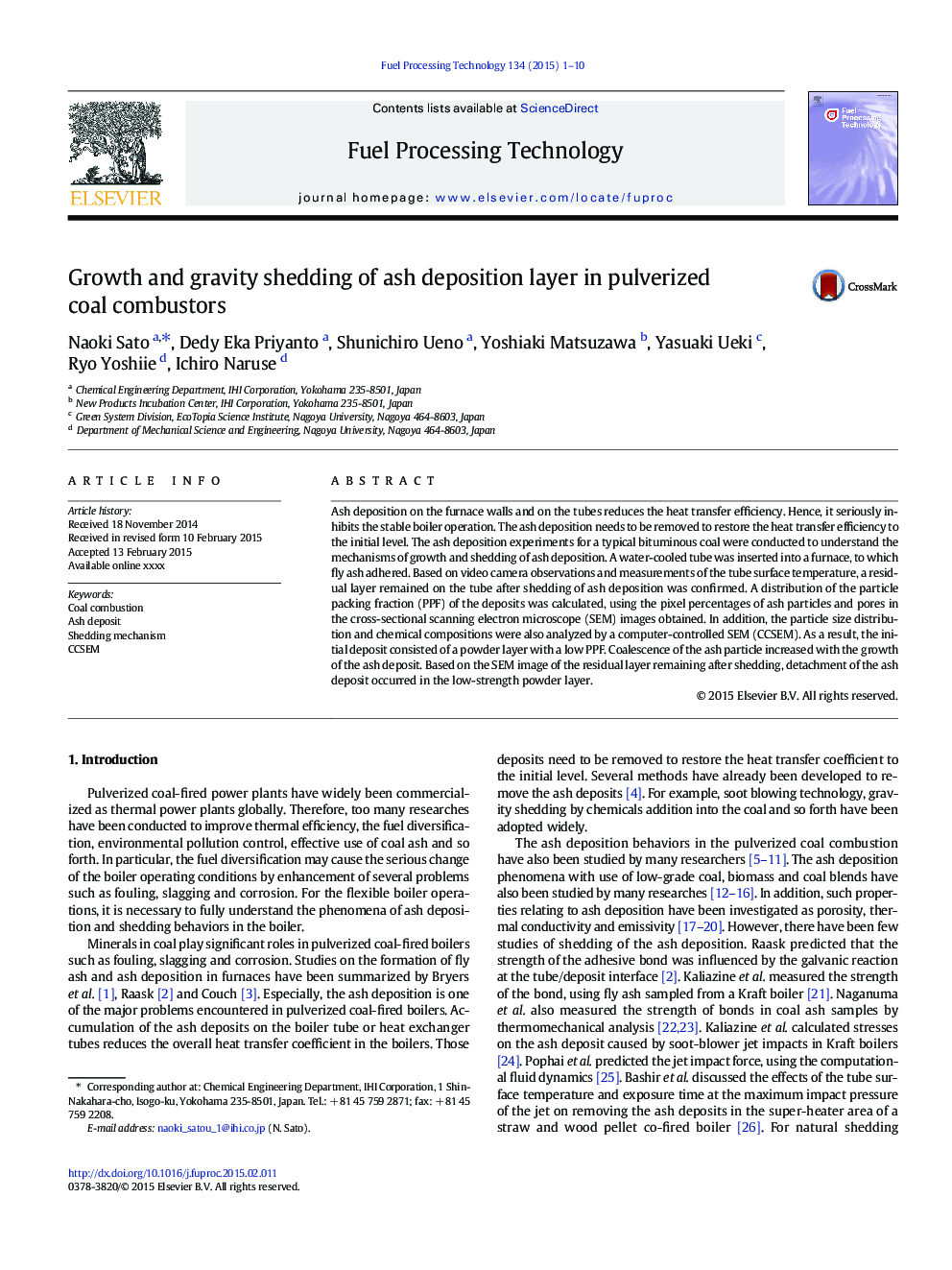| Article ID | Journal | Published Year | Pages | File Type |
|---|---|---|---|---|
| 6656994 | Fuel Processing Technology | 2015 | 10 Pages |
Abstract
Ash deposition on the furnace walls and on the tubes reduces the heat transfer efficiency. Hence, it seriously inhibits the stable boiler operation. The ash deposition needs to be removed to restore the heat transfer efficiency to the initial level. The ash deposition experiments for a typical bituminous coal were conducted to understand the mechanisms of growth and shedding of ash deposition. A water-cooled tube was inserted into a furnace, to which fly ash adhered. Based on video camera observations and measurements of the tube surface temperature, a residual layer remained on the tube after shedding of ash deposition was confirmed. A distribution of the particle packing fraction (PPF) of the deposits was calculated, using the pixel percentages of ash particles and pores in the cross-sectional scanning electron microscope (SEM) images obtained. In addition, the particle size distribution and chemical compositions were also analyzed by a computer-controlled SEM (CCSEM). As a result, the initial deposit consisted of a powder layer with a low PPF. Coalescence of the ash particle increased with the growth of the ash deposit. Based on the SEM image of the residual layer remaining after shedding, detachment of the ash deposit occurred in the low-strength powder layer.
Keywords
Related Topics
Physical Sciences and Engineering
Chemical Engineering
Chemical Engineering (General)
Authors
Naoki Sato, Dedy Eka Priyanto, Shunichiro Ueno, Yoshiaki Matsuzawa, Yasuaki Ueki, Ryo Yoshiie, Ichiro Naruse,
